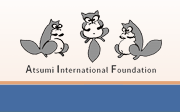Shared Growth Seminar
-
SGRA Sustainable Shared Growth Seminar 27 Report
SGRA Sustainable Shared Growth Seminar 27 ReportLand Value Tax: A Mechanism for Decentralisation?November 16, 2019College of Public Affairs and DevelopmentUniversity of the Philippines Los BañosSeminar Report






